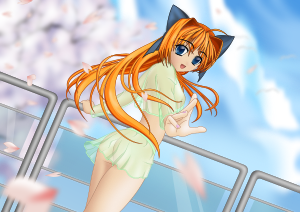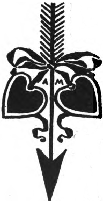How to Draw Anime For Beginner by Le Trung is a basic drawing book that helps aspiring anime artists accumulate some basic skills which will help them achieve some skills. It is available at Amazon.com for Kindle and a physical soft cover copy.
I'm not sure I would recommend this book for the regular Kindle, since the images will be too small to be really helpful. The textual descriptions are somewhat spartan. The translator may have done well in translating the book, but it should have had a proofreader with some skill go over the text to correct for grammar, spelling, and other minor errors that plague the book. Amazon's rating system gives the book three out of five stars.
I cannot compare this book to others like it yet, since it is the first book on drawing anime that I have read. However, I can say that it has dramatically improved what was, before this book, a neglected style of art. Now, I can safely say that I can draw anime characters reasonably well. However, I find that my awareness of historical fashion would well aid my art in this respect.
 Image via WikipediaLe Trung's art in the book is very simple. I don't know if this is the limit of his ability, or simply keeping things simple for the very beginner. It took me about three weeks to go through the book. At times, I felt that he used too many pages to get across some points, which may artificially elevate the price by increasing the number of pages in the book. To be quite frank, I don't think it's worth $20 for the hard copy, nor $10 for the ecopy. Perhaps it may be worth half the asking price.
Image via WikipediaLe Trung's art in the book is very simple. I don't know if this is the limit of his ability, or simply keeping things simple for the very beginner. It took me about three weeks to go through the book. At times, I felt that he used too many pages to get across some points, which may artificially elevate the price by increasing the number of pages in the book. To be quite frank, I don't think it's worth $20 for the hard copy, nor $10 for the ecopy. Perhaps it may be worth half the asking price.I will be reviewing and studying from several more anime books in the coming months.The images following were composed by me over the three weeks it took me to go through the book.
| Basic geometric shapes to start |
This is not the first time I've done this exercise. In fact, I did quite a number of these when I first started taking sketching and art a bit seriously.
| Basic Anime faces |
This is the basic anime face: large eyes, tiny mouth and nose, and great big reflective ovals in the eyes. It took me several hours to start to get the basic oval shape of the face and still somewhat plagues me. However, this was the first anime head that I was somewhat pleased with.
| Catgirl |
| Girl in Kimono |
Catgirls and elfgirls apparently are fairly common creatures within the anime canon. I was kind of pleased with this effort.
Finally, to the left, a girl in kimono. I think these are the ones I will take to most as my skills progress.
However much I love anime, I have to say that traditional watercolours of the Orient turn me on more. Simplicity, elegance, calming colour harmony, are all astonishingly beautiful.




